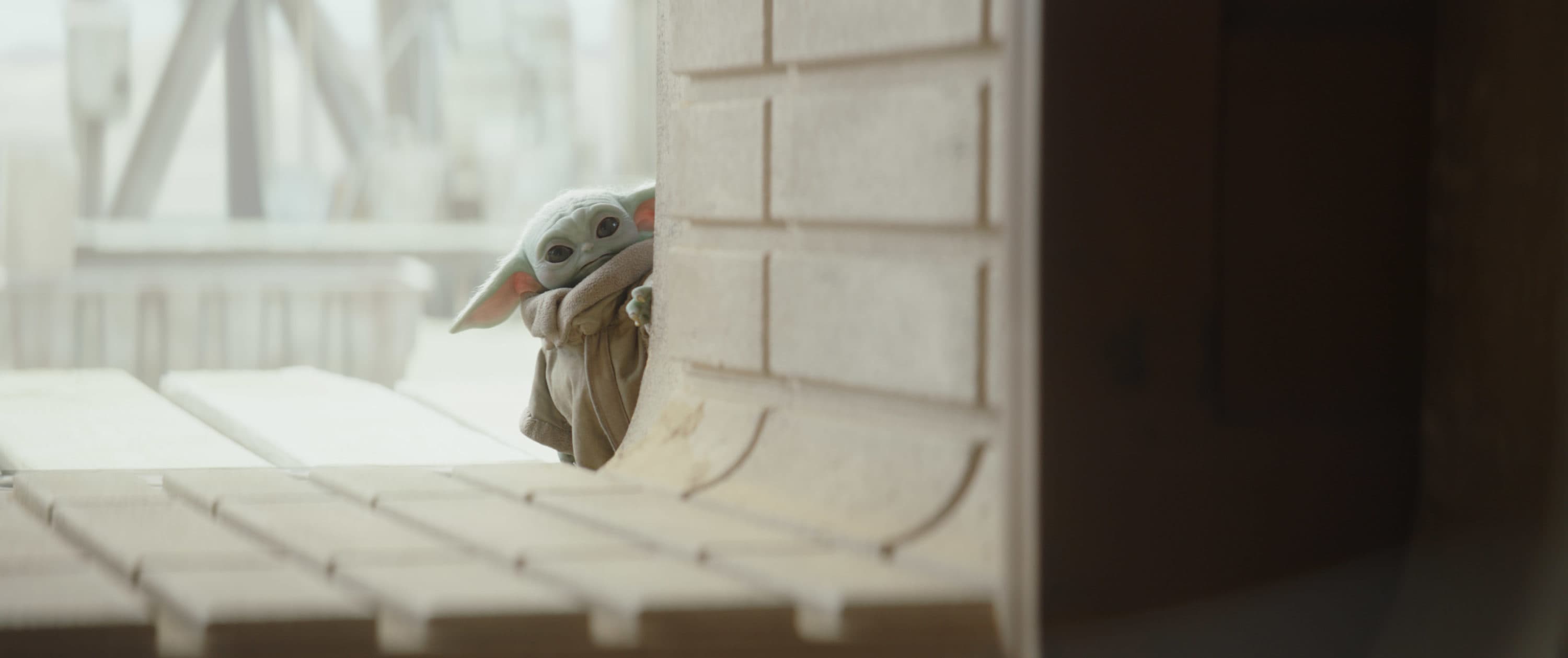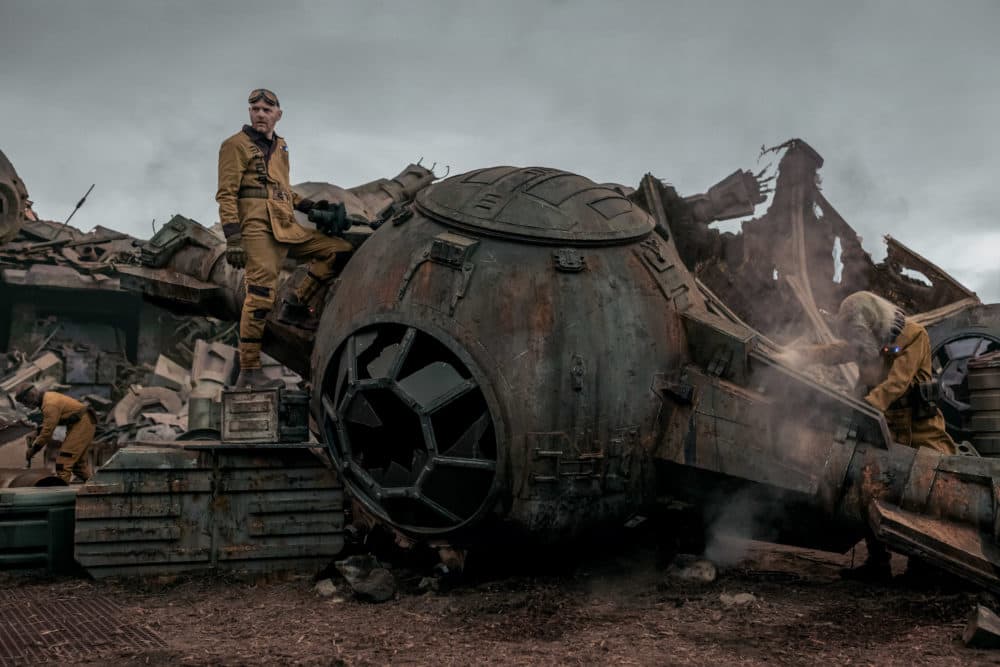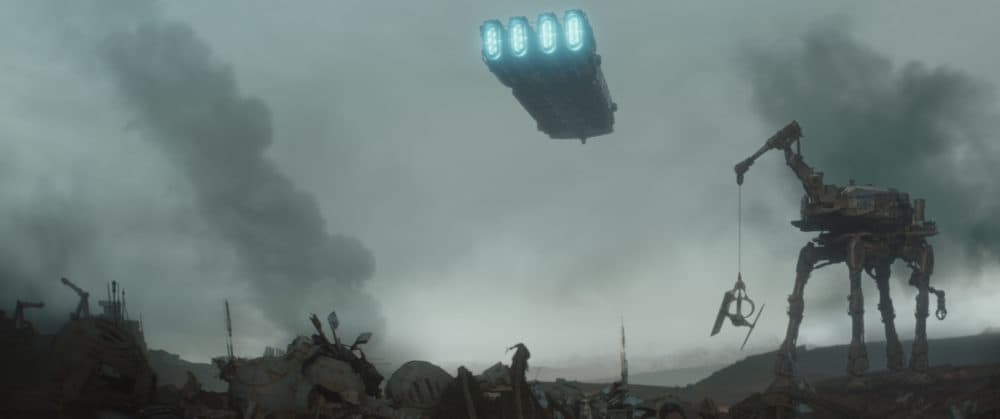Advertisement
'The Mandalorian' Set Designer Breaks Down The Process Of Building The Galaxy's Far Reaches
Resume
For the last eight weeks, “The Mandalorian” fans have feverishly followed the tale of a bounty hunter and an alien child he swore to protect.
Set in the “Star Wars” universe, the atmosphere is as much a part of the show as the characters. This season has taken viewers all over the galaxy, from the desert dunes of Tatooine to a military base deep under a volcanic plain.
Production designer Andrew L. Jones is one of the visionaries behind building the world on your TV screens. The distinct aesthetic of the “Star Wars” franchise is immediately evident in “The Mandalorian,” created by Jon Favreau. “Star Wars” aficionado Favreau was intentional about maintaining the original DNA of early movies such as “A New Hope.”
But “Star Wars” filmmakers didn’t have as much money and technology as “The Mandalorian” does now. After starting on the series, Jones says he was impressed by how much the original “Star Wars” crew created on a limited budget.
“After the experience of working on season one of this show and recreating some of their sets and trying to channel what they did, I'm just amazingly impressed with what they managed to achieve,” he says.

Their ambition can be credited as part of the show’s success, he says.
A large part of Jones’ job is combining digital technology with the physical set, something he says he had to figure out as the show went along. The learning experience showed him what functions and what doesn’t when tying the two worlds together. He says when it all clicks, “it’s extraordinary.”
“The Mandalorian” uses Industrial Light & Magic’s groundbreaking wraparound screen called “the Volume” that projects the landscapes instead of using a green screen.
“The Volume” isn’t static — it can move and show environments from different points of view, something he says “sells the depth.” While there are quirks here and there with luminosity, color and focus, he says the team has since produced a workable rhythm.
The level of detail that goes into the show brings the story to life, like the clutter on the docks of Trask to the graffiti and the neon signs of the Outer Rim metropolis at the start of the season.
To populate all these tiny details and make them look realistic, Jones first works with Doug Chiang and his illustrators at Lucasfilm to craft a 3D model of the show. He likens putting together “The Mandalorian” to a video game.
“Because of that, we can start putting in all of those details,” he explains. “We can bring in assets from previous ‘Star Wars’ shows or video games, and we can scan props and bring those into the world.”
After the stamp of approval from directors who scout the design using virtual reality, Jones slices out parts of the virtual world that he needs to make physical.

Then, the art department starts to brainstorm how to build the set. “Sometimes the best sets are the very simplest,” he notes as a lesson learned in the process.
He’s also got to keep in mind the cutting-edge, expensive technology that surrounds him while putting up the physical scene. For example, he says if the physical set has a pond of water, the team has to be extra cautious about potential leaks.
There was one run-in when technology got in the crosshairs of Jones’ vision for the real-life set. On one morning during the first season, he says they were about to shoot a scene capturing the infamous Sandcrawler, the traveling home of Tatooine’s Jawa scrappers, with its 12-foot-tall caterpillar treads — one real, one virtual — but the real one wasn’t muddy enough. He says his team “ran in and started madly throwing mud onto the treads to get it dirty enough before the company arrived.”
The technology on set is so realistic, the mud-throwing got a bit out of hand at one point.
“I saw a place on one of the treads that didn't have enough mud. And I threw the mud at it, but it was on the screen, so I completely trashed a bit of the screen. That's how convincing it is,” he says.
Being a part of “The Mandalorian” has been a dream come true for Jones. Three factors sold him on working as the set designer, he says.
One was knowing he’d be working with Favreau, someone he’s been on set with before for “The Jungle Book.” He also knew the technology and visual effects at his disposal would be out of this world. And finally, of course, Jones is “a total fan” of the “Star Wars” universe. He says he first watched “A New Hope” with his mom when he was 14 years old, he says.
It takes a massive collaborative effort to construct a show that so many have come to love, he says. There are just as many traditional artists, painters, plasterers, sculptors and carpenters as there are folks hard at work in the virtual art department.
“The two teams are able to work together in a way that I'd never anticipated. The painters are giving paint samples to the virtual artists. The virtual artists are rendering out scenes and giving it to the plasterer,” he says. “So it's a new departure to have this kind of collaboration and this kind of cross-pollinating of the new and the old.”
Alexander Tuerk produced and edited this story for broadcast with Tinku Ray. Serena McMahon adapted it for the web.
This segment aired on December 18, 2020.